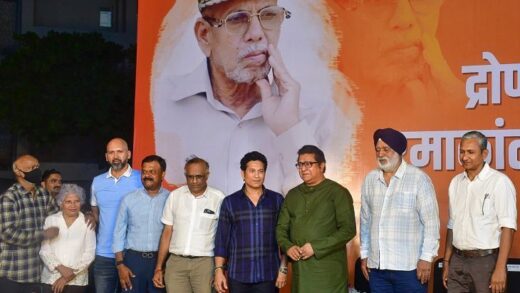Michael J. Butler is Chair of the Department of Political Science at Clark University (Worcester, Massachusetts, USA). He has published six books and over 30 peer-reviewed articles on various topics related to international security and conflict management and resolution. His latest book is Reconstructing the Responsibility to Protect: From Humanitarian Intervention to Human Security (Routledge, 2024). Butler is a member of the Government of Sweden’s Folke Bernadotte Academy International Research Working Group on Dialogue, Mediation, and Peace Processes, a Senior Fellow at the University of Toronto’s Canadian Centre for the Responsibility to Protect, an affiliate with the Netherlands Institute for Advanced Study, and the series co-editor of Routledge’s International Studies Intensives book series. His commentary on international affairs has appeared in numerous media outlets including ABC News, CNN, Foreign Policy, Newsweek, Reuters, The Conversation, UPI, USA Today, Voice of America, the Sydney Morning Herald (Australia), Correio Braziliense (Brazil), CBC (Canada), Expresso (Portugal), Business Times (Singapore), the Korea Times (South Korea) and 360Info (Australia).
Where do you see the most exciting research/debates happening in your field?
Some of the most exciting and generative research in security studies is oriented around expanding conceptions of threat – and, by extension, response. This agenda isn’t new, per se, but the effort at ‘broadening’ our threat horizon and ‘deepening’ our conception of what and whose security is at stake remains intriguing. In part this is due to the fact that we are now well into a second generation of scholars who aren’t afraid to push against the statist / militarist / materialist orthodoxy when it comes to thinking about security. As such we are moving into new terrain and the field looks like it is slowly but surely catching up to lived experience. Whether that’s with regard to the planetary implications of climate change, the multifaceted threat of pandemic disease, the structural violence of discrimination and injustice, the challenges of identity-based conflict, or the pernicious effects of weaponized information, to name a few.
This is undoubtedly exciting, at least if you accept the premise that one of the things we might want or even expect out of the field is a scope of inquiry and a set of findings that could meaningfully contribute to enhancing the security of our species and the world we inhabit. What comes along with this expanded conceptualization of what ‘security’ means is a greater recognition of spaces, places, and faces that for a very long time were subsumed under that orthodoxy I referenced before, or were pushed out of the security studies field altogether. The possible upshot of this is not only or just a human-centered approach to security thinking and practice, but an approach that has the potential to account for other species (non-human), other forms of intelligence (AI), and other domains of human activity (space).
How has the way you understand the world changed over time, and what (or who) prompted the most significant shifts in your thinking?
I have definitely undergone an evolution in my thinking about what is important, as well as in how to study those things. The result is a decided shift toward a more critical posture. Driving that evolution is a conscious desire to humanize and contextually ‘deepen’ my work, in order to better account for actors beyond the state as both subjects and objects of security thinking and practice(s) – and ultimately to push against the limits of that subject/object dichotomy. It’s hard to point to specific people or events that explain the genesis of that evolution; it’s been the by-product of a lot of inputs, and has been shaped by many brilliant people I’ve met along the way. I definitely do think this shift in my thinking has accelerated in recent years as a consequence of the intensity and ubiquity of the challenges confronting us on every level – personal, communal, national, global, planetary. Among other things I’d have to point to transnational social movements mobilized around climate change and racial justice as providing a ‘wake up call’ of sorts not only about my vocational obligations but also my own privilege and biases. I’m continually seeking ways to integrate this consciousness into my research and teaching.
How would you define humanitarian intervention, and what key challenges have arisen from its practice? How have these challenges influenced the adoption of the Responsibility to Protect (R2P) framework?
Humanitarian intervention takes different forms; my work focuses largely on humanitarian military intervention, which I define as a direct coercive action by states and/or international organizations involving the use of armed force within the jurisdiction of a state without the consent of its authorities in order to prevent or alleviate widespread suffering or death. This action can be undertaken on a unilateral as well as multilateral or collective basis, and the action itself and its outcome(s) may not be entirely or even mostly humanitarian in character – but to qualify, its intent or motive must be at least partly so.
Humanitarian intervention of this type has faced numerous challenges throughout history, especially concerning its legality, as well as shortcomings in capacity and political will. As I discuss at length in my new book Reconstructing the Responsibility to Protect, humanitarian intervention’s basis in international law is ambiguous due to the long-standing tension between state sovereignty and human rights. This ambiguity is amplified by debates over which (if any) entity has the legal competence to authorize such interventions and the criteria for determining their lawfulness. With regard to (in)capacity, a persistent problem has long been the lack of appropriate resources within the international community to effectively carry out humanitarian interventions. While the UN Security Council is seen as the most plausible authority for authorizing such actions, implementing them requires heavy reliance on a select subset of states. Such states often underperform due to self-interest, misaligned military forces, and credibility issues. Last, but not least, is the lack of consistent political will among states to engage in humanitarian intervention due to the risks and costs associated with protecting civilians in complex political emergencies. As I argue in the book, these challenges are interconnected and share a common root: a strict adherence to the Westphalian state-system and its central tenet of non-interference, which poses a major obstacle to the justification, authorization, and execution of humanitarian intervention.
Recognition of these challenges and a need to circumvent them in order to narrow what I refer to in the book as the ‘humanitarian intervention deficit’ inspired the ICISS to develop the Responsibility to Protect (R2P) framework. From its inception, R2P was designed to embed non-consensual force within a broader range of measures aimed at enhancing civilian protection and preventing and halting genocide and mass atrocities. R2P was conceived with the ambition to transform the international order by redefining notions of responsibility, sovereignty, and security, placing human life, dignity, and rights above the entrenched concept of state sovereignty. This would involve a number of significant, even radical objectives. These included, for one, shifting the focus from a “right to intervene” to a “responsibility to protect” which emphasized a collective obligation of the international community to act in humanitarian crises. A second objective was a redefinition of sovereignty that prioritized a state’s responsibilities towards citizens and which made sovereignty contingent on the execution of those responsibilities. Lastly, by arguing that state sovereignty is contingent on the protection of its people, R2P sought to promote a more comprehensive approach to human security along three dimensions: not only reaction to humanitarian crises, but also prevention and rebuilding efforts.
You mentioned that R2P experienced stagnation during its initial launch. What problems did it face at that time, and which of those challenges are still relevant today?
Upon its initial launch R2P had significant appeal and enjoyed a great deal of traction in the international community. Indeed, from its introduction by the ICISS in 2001 through its endorsement by the Security Council in UNSCR 1674 in 2006, R2P enjoyed a remarkable run – perhaps to its detriment, as this success seems to have led some of its strongest proponents and allies to relax and conclude that R2P would unproblematically transform international society.
Paradoxically, it was the close association of R2P with humanitarian intervention that explains both its early success and its eventual stagnation. The acute lack of a mechanism for facilitating humanitarian responses in cases where they were desperately needed created a receptive climate for R2P, particularly among states and institutions that were already favorably disposed. Yet with the benefit of hindsight, it is clear that the attempt to frame R2P chiefly, even solely, as a “solution” to the problems of humanitarian intervention would eventually lead to it sliding back into the same contentious legal debates and power dynamics that had hindered humanitarian intervention for years.
Another issue specific to R2P that reared its head following its early salad days is something I call the “saving strangers problem” – which I argue in the book is a direct consequence of drawing this near equivalence between R2P and humanitarian intervention. Doing so undermined the larger potential of R2P to transform global security norms and practices, not only shunting R2P back into the fraught landscape surrounding humanitarian intervention but also opening up R2P to charges of cultural bias, partiality, and a limited scope of, and for, action. This in turn gave credence to critics of R2P who framed it as a ‘covering device’ for the liberal peace and even neo-imperialism. This problem, I contend, has plagued R2P since Libya, further intensifying as challenges to the liberal international order from both authoritarian states and the ideological Left have intensified.
What prompted you to use and reconsider the norm life-cycle model to reexamine the R2P framework?
The norm life-cycle model as introduced by Finnemore and Sikkink (1998) remains an extremely useful device for thinking about norms, so for that reason using it is a no-brainer in a project like this one. However, when I began investigating R2P intensively several years ago it seemed clear to me that there was something unusual going on with it, in terms of its loss of traction and appeal in international society, and in many of the domestic societies who had originally been receptive proponents. R2P had clearly crossed a threshold of acceptability in the UN and elsewhere, but it was losing steam. This struck me as theoretically interesting, and maybe even counterintuitive. As I dug into this I began encountering other scholars who were also highlighting this dynamic with other purported international norms – which they referred to variously as norm ‘disintegration’, ‘backsliding’, ‘degeneration’, and the like. That led me to reconsider the internal logic of the norm life-cycle, and whether we ought to assume a linear trajectory across its three stages (emergence, cascade, and internalization), or perhaps more accurately, how we might think about factors that can and do interrupt that trajectory, or even derail it.
And that led me to the theoretical notion of norm stagnation introduced in the book– one possible explanation for how and why what appear to be emergent norms fail to mature and diffuse within and throughout society. This stagnation in R2P’s normative evolution is the chief consequence of the “saving strangers” problem – and by extension the main source of R2P’s seeming irrelevance today. Reducing R2P to little more than a covering rationale for humanitarian intervention caused it to run afoul of lots of different actors in international society, and beyond that it created a false optimism and complacency among many of R2P’s proponents. Buying into R2P’s supposedly inherent virtue meant that when friction was encountered, it was dismissed or overlooked, since R2P was presumed to be self-perpetuating. If nothing else, introducing the prospect of and for norm stagnation provides a reminder that the journey of an idea to normativity isn’t automatic, but one that requires entrepreneurship.
You emphasize the importance of the ethics of protection within the R2P framework. How do prevention and proactivity serve as essential components to reformulate this framework?
I’ve noticed that you are referring to R2P as a “framework.” I don’t know that I do so in the book, at least not intentionally and consistently, but I like it. It seems to me to be an accurate and useful way to think about R2P. Because really it is not a single idea, but rather an outgrowth of an amalgam of different ideas about not only protection but also prevention, and responsibility, and sovereignty, and security. And that is, I think, what gives R2P its power and potential as well as serving for the basis of reconstructing its normative agenda.
Debates have long persisted about the relative weighting between and among reaction, rebuilding, and prevention, but its inarguable that prevention has always been a core component of R2P. This got lost amidst the disproportionate focus on responding to discrete crises, which came at the expense of developing and implementing preventive measures. This singular focus on reaction limits R2P’s scope and reinforces the flawed assumption that human security can be achieved through episodic interventions – interventions which often haven’t resulted in the desired outcomes, and which are becoming fewer and further between anyway. So there’s a conceptual argument for prevention, but also a practical one. Those costly, risky, ineffective, and increasingly scarce ‘humanitarian interventions’ could be largely averted were we to reconceptualize R2P in a more proactive light – as a tool for addressing the underlying causes of human insecurity and preventing the kinds of crisis dynamics that result from the failure to do so.
I make the case in the book that this is a new way of translating R2P’s ethic of protection. It expands the scope of action from acute crisis events to diffuse and enduring security threats, while remaining consistent with R2P’s original purpose of supplementing or even substituting for the state when it is incapable of or unwilling to protect individuals. I see this as a long overdue course correction that could break the stagnancy around R2P by recalibrating it to address what are broad-based threats to human well-being – threats which outstrip the capacity of states, individually and collectively.
Is there a place for R2P on the international stage today, particularly considering ongoing conflicts in the Middle East and Ukraine?
I just published a short think piece on this very topic which is, I believe, the single most important question currently confronting anyone who studies R2P or who cares about civilian protection and mass atrocity prevention. The short answer (rarely one I provide!) is yes…but.
What we are seeing in the Middle East and Ukraine today is, I would argue, the logical and inevitable outcome of neglecting, even abandoning, any sense of collective ethical or moral duty to provide for the security of human beings. R2P itself is not to blame for that, since R2P attempted to promote that very thing. But the fact that R2P lies in tatters and is effectively a dead letter today means that we can’t hope to address the widespread human tragedy on display in Gaza, or Ukraine, or wherever else, using R2P in its current form.
This is where I contend that a reconstruction of R2P along the lines of what I’ve argued for in the book is not necessarily at odds with an R2P that could provide international society with a mechanism for civilian protection and atrocity prevention in discrete cases. Ultimately, I conclude that resuscitating R2P as a normative enterprise is best served by recalibrating R2P’s focus toward proactively promoting human security in the face of ongoing, diffuse, and broad-based threats that states aren’t able or willing to address. But this doesn’t require abandoning the reaction dimension in acute cases of widespread human suffering such as in Gaza or Ukraine. Indeed, these humanitarian crises are the logical if extreme manifestation of what happens when states are no longer held to account. To be sure, most of the time this lack of accountability leads to a neglect of the state’s duties to provide for the well-being of those in its midst. Unfortunately what we are seeing in Gaza and Ukraine are states run amok, actively employing their coercive power and capacity to dominate and decimate human beings without restraint and in the absence of any constraints. Though extreme, this is a place that we will continue to visit if we remain an international society without constraints on state behavior in the security arena. Though we may need to take an alternative route back to (re) establish those constraints, I think the blueprint for doing so remains the R2P framework.
Have you encountered any theoretical frameworks besides R2P that could offer a viable approach to humanitarian intervention?
There are numerous frameworks and concepts that pertain to humanitarian intervention in a broader sense, many in the development studies and anthropological literature. And one could certainly look to cognitive theory, game theory, and philosophy when it comes to trying to understand motives (whether mixed or altruistic). In the narrower sense of humanitarian intervention that I’m concerned with, perhaps the most directly relevant theoretical framework is just war theory. Particularly with the modern renaissance of just war theorizing that began with Michael Walzer’s Just and Unjust Wars (1977), just war theory has grappled extensively with the potential exceptions for intervention, with humanitarian intervention front-and-center. Indeed, my work is hardly novel in referencing the ways in which just war thinking has influenced R2P, and other scholars have compared and contrasted the two frameworks explicitly and to great effect. And, from an implementation standpoint, as I discussed in the book, some of the ongoing calls for a set of decision-rules or criteria for applying R2P drew expressly from concepts such as competent authority, last resort, and proportionality. Just war theory also shares some of the same limitations as R2P, particularly given its grounding in natural law theory and its decidedly Western (Judeo-Christian) origins. Come to think of it, it’s probably not a coincidence that I published a book over a decade ago on just war theory and intervention!
What is the most important advice you could give to young scholars of International Relations and Politics?
I’ve been at this for almost a quarter century now, and obviously thinking about this stuff even longer. So that’s a generation, which makes me a member of the old guard, whether I like it or not. It’s quite easy for someone like me – or anyone, really – to get stuck in their lane, and I think the fixation of scholars on the notion of attaining the ascribed status of ‘expert’ reinforces that. But in my estimation that whole thing is a trap, as it works against growth and evolution and stifles curiosity. It is really incumbent on us to push back against that tendency if we want to continue to grow intellectually and if we want our work to be relevant to the world around us. I’m not arguing to tear up (or tear down) the canon, but I do think it is important to recognize its limitations and to draw on new insights and contributions to the field that aren’t part of the canon – and from other fields too.
I see IR in general, and security studies in particular, as inherently interdisciplinary and multidisciplinary, and also a dynamic and iterative thing – so I don’t see much of an alternative, really. What can we learn from fields like climate science, or cultural anthropology, or the study of memory – to name just a few? How can we use insights from these and other fields to better diagnose, understand, and respond to what is leaving so many people and societies in a state of seemingly perpetual insecurity? I’m not sure this is the best path from the standpoint of professional acclaim, but I’m convinced that it is from the standpoint of intellectual fulfillment. So in the end I guess my advice would be to seek that fulfillment, and let the professional recognition take care of itself.
Further Reading on E-International Relations
Source link
#Interview #Michael #Butler



/cdn.vox-cdn.com/uploads/chorus_asset/file/25809804/_photo3__UltraGear_GX9_45GX990A_Bendable.jpg?w=520&resize=520,293&ssl=1)














